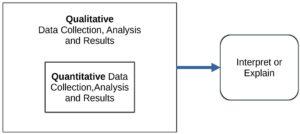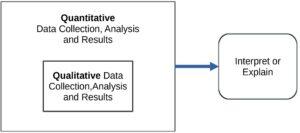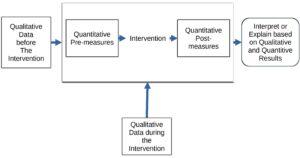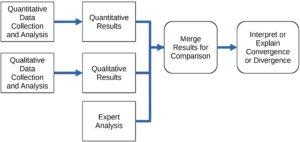Mixed Methods Research Design
Published by Blog Editor on
Mixed Methods Research Design
Here we will explore the world of mixed methods research and delve into the different types of mixed methods research designs.
To begin, let’s revisit the definition of mixed methods research. According to Creswell in 2012, this method involves the use of both quantitative and qualitative methods in a study to understand a research problem. The combination of both methods is based on the assumption that it provides a better understanding of the research problem than either method by itself.
The mixed methods research design involves both quantitative and qualitative data. After collecting and analysing both types of data, researchers compare and integrate the results to draw conclusions.
There are six types of mixed methods research designs, including the convergent parallel design, explanatory sequential design, exploratory sequential design, embedded design, transformative design, and multiphase design.
Convergent Parallel Design
The convergent parallel design involves collecting both quantitative and qualitative data simultaneously, with one data set supporting the other. Both sets of data are analysed separately and then compared to produce a detailed interpretation of the results.

Convergent Parallel Research Design
Explanatory Sequential Design
The explanatory sequential design involves collecting quantitative data first, analysing it, and then collecting qualitative data to provide a more detailed explanation of the trends observed in the quantitative data.

Explanatory Sequential Research Design
Exploratory Sequential Design
The exploratory sequential design involves collecting qualitative data first, followed by quantitative data, to generate hypotheses and explore a particular phenomenon.

Exploratory Sequential Research Design
Embedded Design
In the embedded design, one data set is embedded within another, with either the quantitative or qualitative data being primary and the other data set serving to support or expand on it.

Embedded Research Design 1

Embedded Research Design 2
Transformative Design
The transformative design involves collecting both quantitative and qualitative data to create a new perspective or understanding of a research problem.

Transformative Research Design
Multiphase Design
And finally the multiphase design, on the other hand, involves the use of three or more data sets to gain a comprehensive understanding of a research problem.

Multiphase Research Design
Conclusion
Each of these designs provides researchers with unique advantages and helps to address specific research problems.
Please visit our videos about Quantitative versus Qualitative Research and Cross-Sectional Data Collection.


